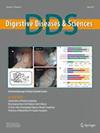仅限于G大调小步舞曲。
IF 2.5
4区 医学
Q2 GASTROENTEROLOGY & HEPATOLOGY
引用次数: 0
摘要
铃木新一博士认为,所有的孩子都有能力成为熟练的音乐家,只要在一个有奉献精神的老师的支持环境中培养。他的铃木方法强调听、模仿和复习等学习策略,提供了一个很好地转化为内窥镜套件的框架。在本文中,我描述了铃木方法的核心组成部分,并提出了内窥镜教学的相关内容——如观察、建模和逐步指导——可以改进我们向学员教授内窥镜的方式。本文章由计算机程序翻译,如有差异,请以英文原文为准。
Scoping to Minuet in G.
Dr. Shinichi Suzuki believed that all children had the ability to become skilled musicians when nurtured in a supportive environment with a dedicated teacher. His Suzuki method, which emphasizes learning strategies such as listening, imitation, and review, offers a framework that translates well to the endoscopy suite. In this paper, I describe the central components of the Suzuki method and propose the endoscopy teaching correlates-such as observation, modeling, and stepwise instruction-that can improve the way we teach endoscopy to our trainees.
求助全文
通过发布文献求助,成功后即可免费获取论文全文。
去求助
来源期刊

Digestive Diseases and Sciences
医学-胃肠肝病学
CiteScore
6.40
自引率
3.20%
发文量
420
审稿时长
1 months
期刊介绍:
Digestive Diseases and Sciences publishes high-quality, peer-reviewed, original papers addressing aspects of basic/translational and clinical research in gastroenterology, hepatology, and related fields. This well-illustrated journal features comprehensive coverage of basic pathophysiology, new technological advances, and clinical breakthroughs; insights from prominent academicians and practitioners concerning new scientific developments and practical medical issues; and discussions focusing on the latest changes in local and worldwide social, economic, and governmental policies that affect the delivery of care within the disciplines of gastroenterology and hepatology.
 求助内容:
求助内容: 应助结果提醒方式:
应助结果提醒方式:


